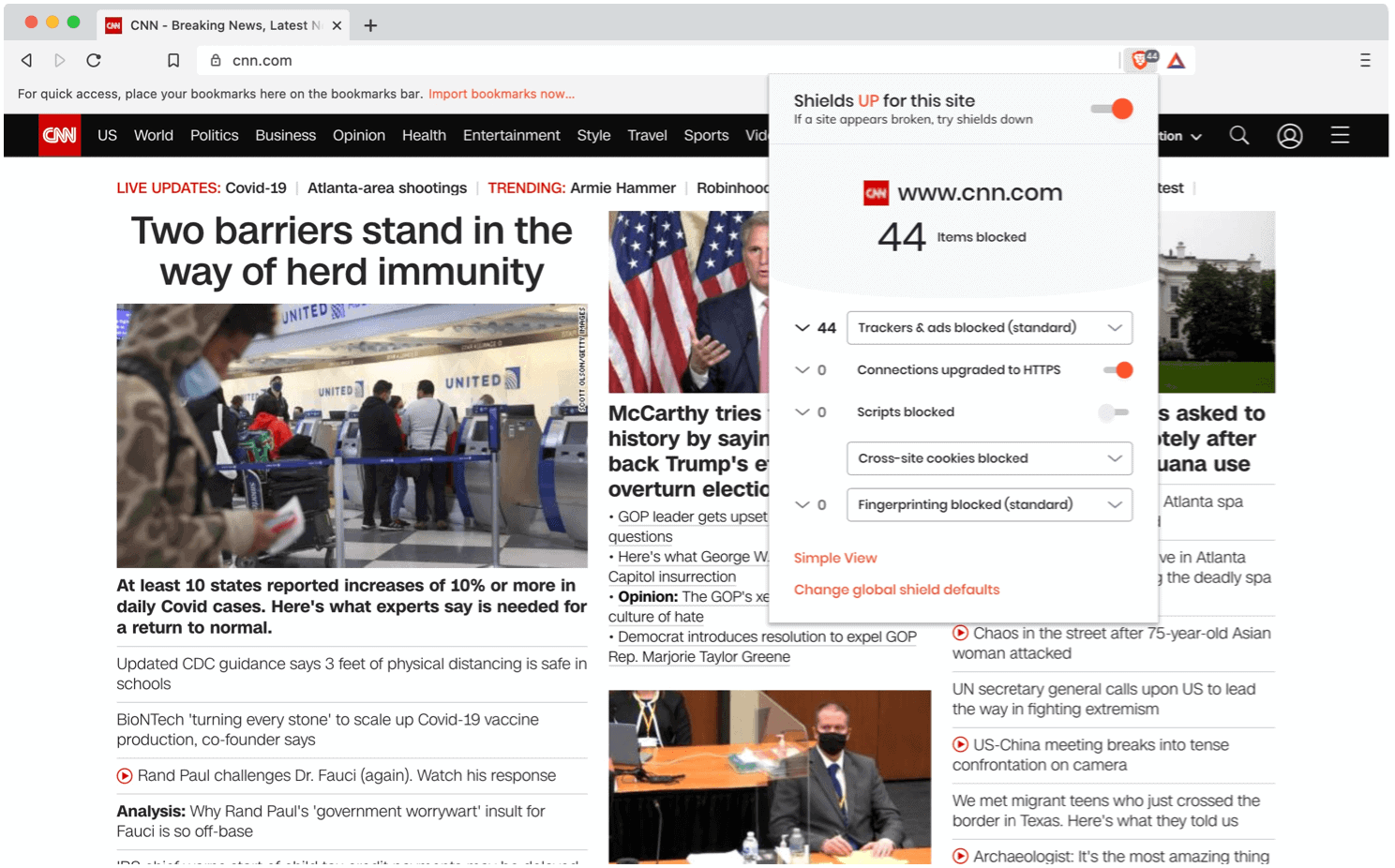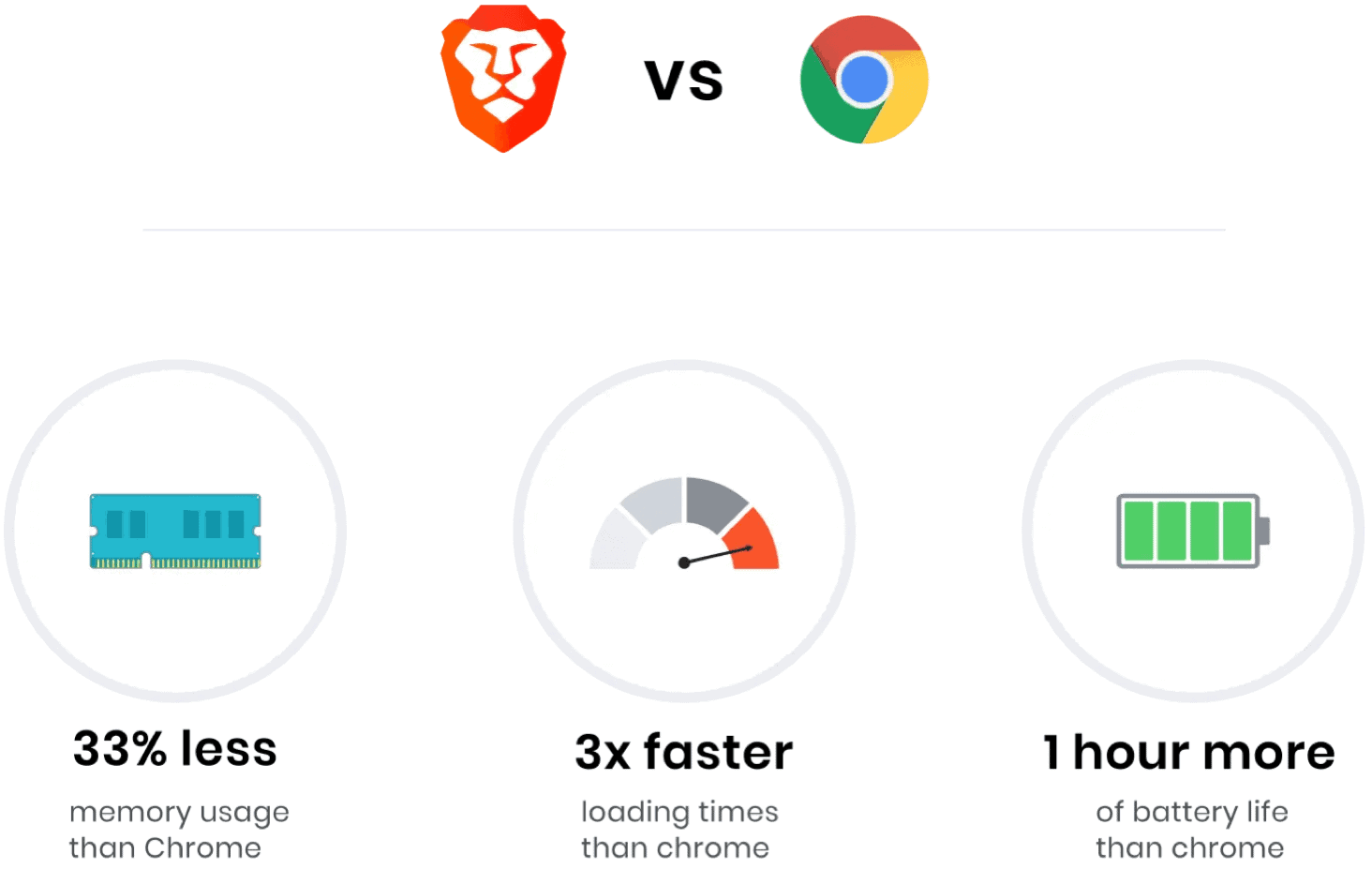What is Brave Browser and What Makes it Unique?

Are you looking for a speedier and more secure web browser? Consider the Brave browser, which is available on various platforms.
You’ve heard about Google Chrome, Mozilla Firefox, and Microsoft Edge. If you’re an Apple device owner, you’re almost certainly familiar with Safari. These four web browsers heavily dominate the market, with Google Chrome far ahead of any other. And yet, there’s another browser worth considering. The Brave browser is available across multiple platforms and sells itself as “three times faster than Chrome. Better privacy by default than Firefox. Uses 35% less battery on mobile.”
Here’s a look at the Brave browser, why you should use it, and where it’s available.
Brave Browser: Introduction
Developed by Brave Software, Inc., Brave is based on Chromium, a Google-sponsored free and open-source web browser. This is the same technology Google uses for its Chrome browser and Microsoft for Edge. Chromium is also the brains behind lesser-used browsers, including Amazon Silk, Opera, Vivaldi, and many more.


The Brave browser is available across many platforms, including Windows, macOS, iOS, Android, and Linux. Given the quote mentioned above, it shouldn’t come as a surprise that it heavily focuses on security and speed. This one-two punch is achieved by blocking ads and trackers automatically. Removing these pesky tools means the browser can move at faster speeds.
Brave also includes a rewards opportunity where advertisers pay you to view ads — but only when you want to.
A lot of what the Brave browser does or offers is similar to other browsers, such as adding tabs and bookmarks. These aren’t discussed here. Instead, we’ll focus on the browser’s unique features, which are the most important reasons you should consider when deciding whether to use it.
Protection
Shields are one of the most important features in the Brave browser. With Shields, the website fights malware and prevents tracking, thereby keeping your information safe and secure.
By design, most web browsers, including Google Chrome, focus on the collection of cookies. These small pieces of data get stored on your computer while browsing a website. In turn, these websites can remember your past visits, including your browsing history. In turn, you have a more personalized surfing experience where your favorite sites remember what you like (and don’t like), your purchase history, and more. Companies ultimately use this information to clog your inbox with advertisements, good and bad, useful and not so useful.
Cookies aren’t just used by Amazon, eBay, and Best Buy whenever you visit their online stores. When using a search engine online (hello, Google Search), your movements are being collected and sold to advertisers, corporations, and others. This type of user collection is why you’re likely to see a television ad on YouTube soon after searching for new televisions.
Unfortunately, some cookies and trackers go beyond being used for advertising. These cookies and trackers can be dangerous and are designed to collect your information for nefarious reasons such as identity theft. These can include malware, viruses, and other nasty code.
Brave Shields include ad-blocking, fingerprint prevention, cookie control, block scripts, and more. Brave doesn’t collect your personal information for added security, nor is anything about you kept on the company’s servers. And it doesn’t sell your content to advertisers.
Brave Browser: What’s Blocked?
When you’re on a website, you can always see what type of content Brave has blocked by clicking on the Shield at the top right of the browser. The report shows the number of trackers and ads and more as the following example shows.


What if you want a personalized web experience? By default, Brave blocks the stuff that could harm your security and privacy. But you can change these settings on a per-site basis. You can also adjust the default shield settings if you think they are too restrictive.
Speed and Battery Life
Brave claims its webpages load three times as fast as Google Chrome on computers, and it’s even quicker on smartphones. The speed bump comes largely because it’s blocking ads and trackers automatically. This means fewer downloads are necessary when you’re on the web. It also uses up to 66 percent less memory and 35 percent less battery.


In October 2020, Avast independently compared web browsers to see which ones were the fastest. It concluded that Apple Safari leads all others. However, because there is no longer a Windows version of Safari, the result is largely irrelevant. The report compared performance speeds in “everyday-use scenarios.” The larger the number, the better the speed.
The results are as follows.
- Safari, 133
- Microsoft Edge, 125.63
- Google Chrome, 105.17
- Vivaldi, 104.3
- Brave, 101.43
- Opera, 101.3
- Mozilla Firefox, 92.1
As you can see, Brave’s speed sat in the middle of the pack. And yet, even Avast admitted that speed alone isn’t what makes a great web browser. It notes, “The fastest browser download speeds aren’t the be-all, end-all of what makes a given browser good.” Besides speed, privacy and security are also important. When all three combine, Brave really shines.
In many online surveys, Brave was ranked the highest and called the “best all-around secure browser.” In a similar survey from ExpressVPN, Brave took the third position. At the same time, PrivacySavvy said it is “not only a secure browser that respects users’ privacy, but it also loads pages faster than mainstream browsers such as Chrome.”
Regardless of the survey, Brave always ranks near the top overall.
Brave Rewards
As previously noted, one of Brave’s most important goals is to eliminate ads and trackers. These are the same annoyances that companies like Google have used to make billions of dollars for their shareholders. With Brave Rewards, these dynamics get upended. As you view privacy-respective ads, you can pay it forward to support content creators you already love.
The Brave ads don’t collect personal information but still consider your surfing habits to match your interests. This information says stored on your device. Better still, the ads aren’t intrusive. Instead, they show up as native system notifications or background images on a separate tab.
As Brave explains:
Brave Rewards locally picks which private ads to show you based on your browsing activity. Then, Brave uses an anonymous accounting process to confirm ad event activity, keep personal details private, and ensure people earn rewards for their attention.
Each month, you earn Basic Attention Tokens or BAT. When viewing Brave Ads, you receive 70 percent of the ad revenue, which Brave hopes you pass along to your favorite web content creators. You can also tip creators directly as a reward for making great video content.
Brave Rewards, like the Brave browser itself, has a tiny footprint in the world. And yet, it’s something that could catch on as people grow increasingly more concerned about online privacy and still recognize that companies need to earn monies to stay in business. Whether something like this will force companies like Google to look for other ways to earn big bucks remains to be seen.
Odds and Ends
There are three final points that are worth discussing. First, because Brave Browser uses Chromium, you can use the same extensions you have used in Google Chrome and download news to install from the Chrome Web Store. Chromium is what the new version of Microsoft Edge uses. Additionally, you can seamlessly bring over your bookmarks from other browsers.


Finally, Brave offers a firewall and VPN service for those who want added protection on their iOS device. It’s available for $9.99 per month or $99.99 per year through an in-app purchase. One subscription allows you to install the firewall and VPN on up to five separate devices.
Brave Browser Downloads
You can download the Brave Browser directly from the Brave website or through Google Play and the App Store.












